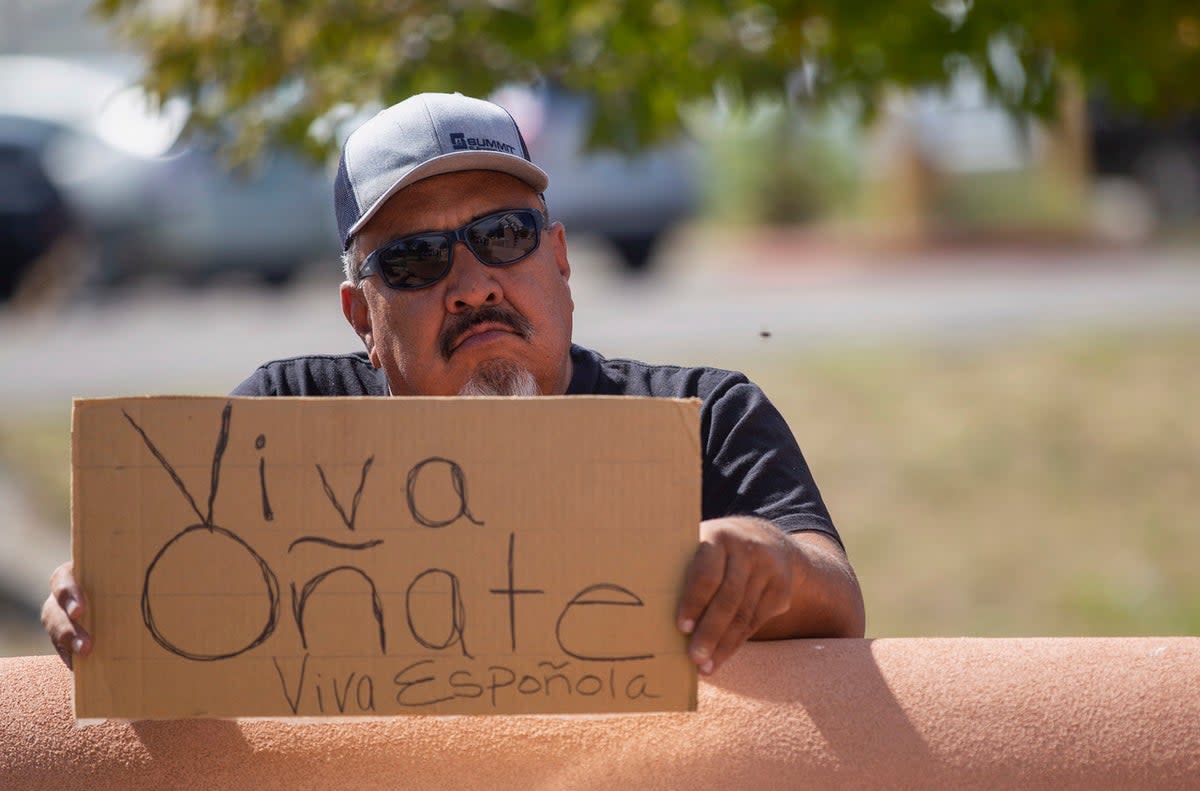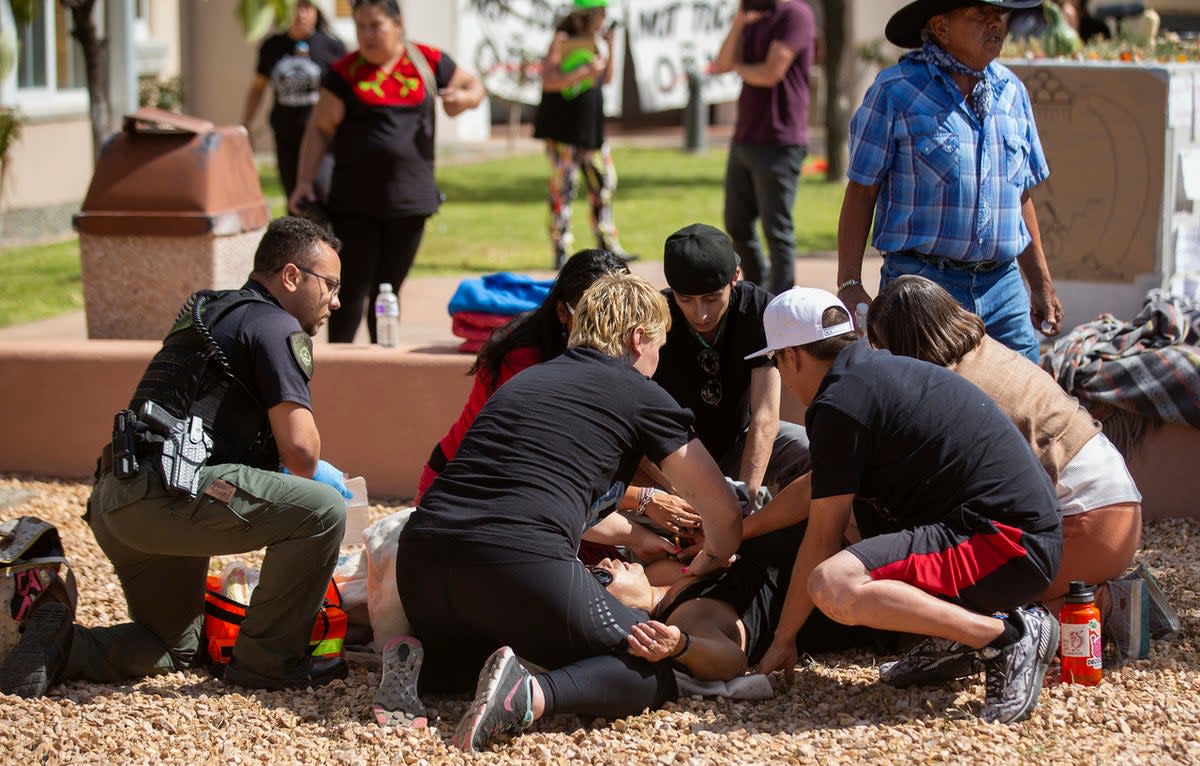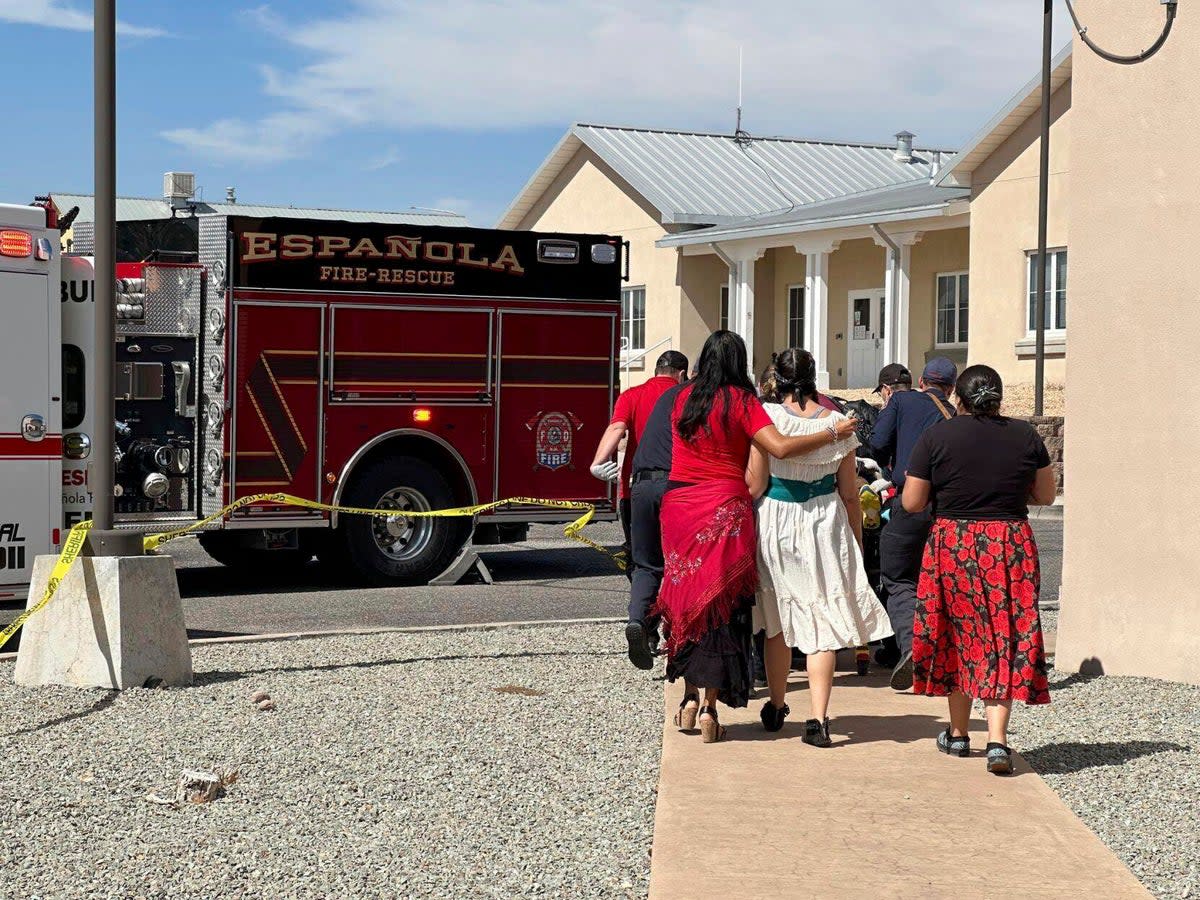Who was Juan de Oñate, ruthless conquistador whose statues have inspired two shootings?

In 2020, a man was shot in New Mexico’s largest city, Albuquerque, as protestors tried to tear down a bronze statue of Spanish conquistador Juan de Oñate outside a city museum.
Police later announced that the monument would be removed until next steps could be determined.
Now, three years later, chaos erupted as another person was shot and rushed to hospital during a similar protest on Thursday in which people were demonstrating against the reinstallation of the Oñate statue — an event county officials had already postponed in anticipation of potential trouble.
After gunfire blazed and a person was injured, police captured a suspected shooter, 23-year-old Ryan Martinez, and took him into custody, with police said they were not currently seeking any other suspects in connection with the shooting.
This is the second time chaos and violence sparked over the statue, so what significance does this monument hold and who is Juan de Oñate?
Here is everything you need to know
Who was Juan de Oñate?

Juan de Oñate has been a controversial figure in New Mexico’s history for generations, with activists targeting the statue and other likenesses of the Spaniards in protest of his oppressive and sometimes brutal treatment of Native Americans.
Some Hispanics, however, have pointed to the statue as a symbol of their heritage.
The brutal leader established the colony of New Mexico for Spain and during his governorship eagerly sought the riches of North America and succeeded in his country’s conquest of what is now the Southwestern United States.
He was the son of wealthy parents in Zacatecas, located in north-central Mexico, and gained a more prominent status after he married a daughter of Aztec empire conqueror Hernán Cortés.
Oñate’s request to invade and govern what would become New Mexico was approved in 1595, but it was not until three years later that his expedition of 400 settlers finally began its northern journey, according to Britannica.
They soon crossed the Rio Grande and set up headquarters near the site of Los Alamos, from there parties were sent in all directions to search for gold.
Many settlers wanted to return to Mexico, but Oñate’s cruel treatment prevented them from leaving; meanwhile, his measures against the indigenous people were even harsher.
“He made land grants to his colonists and empowered them to collect tribute from the forced labour of Indians,” John Burnett said in an NPR report.
“… Spanish soldiers who had demanded food and blankets from the Indians of the Acoma Pueblo were attacked by Native warriors. Twelve soldiers died in the fighting. In retribution, Onate declared a war by fire and blood against the Acoma.
“Soldiers returned, slaughtering at least 800 warriors, women and children. The Spaniards enslaved most of the survivors and cut a foot off of 24 young men as a warning to other rebellious pueblos,” Burnett added.
In 1601, Oñate continued his hunt for treasures and headed further north, but returned empty-handed and found that most of his colony had left during his absence.
In an attempt to recover his reputation, Oñate led 30 soldiers on an expedition to the Colorado River and the Gulf of California in hopes of finding gold, another expedition that turned out to be unsuccessful.
In 1607 he stood down from his position and was later found guilty of cruelty, immorality and false reporting. He was then exiled from the colony, fined and deprived of his titles.
The Spanish conquistador is remembered by many as a violent figure

Jennifer Marley, of San Ildefonso Pueblo, an organiser for the Native American rights group The Red Nation, said the shooting took place within view of the county sheriff’s department building but without any officers on site to intervene.
“It was awful. This was a peaceful call to action. We were there to celebrate the fact that the statue was not going up,” she said.
She described Oñate’s legacy as one of genocidal violence.
“It’s really ironic, I was basically saying that this violence is ongoing ... even when we are being peaceful and prayerful. The shooting began while I was speaking.”
But there are many who support the installation of the statue.
Tony Ortega, a 78-year-old retired technician who worked at Los Alamos National Laboratory, said he was glad to hear the county planned to put the Oñate statue back on public display as a symbol of local Hispanic pride.
But he said he knew it would cause trouble. “I knew this was going to be a problem. Native Americans don’t want it,” Mr Ortega said.
“They think Oñate was a bad person, more or less.”
Additional reporting from agencies
